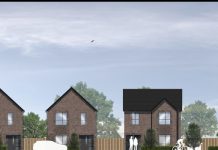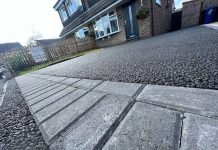The number of new homes coming to market is at a ten-year low, with fewer people taking out mortgages to get on the housing ladder or buy a new home. Chancellor Phillip Hammond has just unveiled his autumn budget for 2018, and hidden among the numbers was what looked like some good news for potential homeowners and the UK property market.
Now the dust has settled and the figures examined in more detail, here are just a few positive takeaways for those hoping to get onto the first rung of the ladder or hoping to buy a new home in the coming months.
Stamp Duty and Shared Ownership
This time last year, Phillip Hammond abolished Stamp Duty for first time buyers purchasing a house or land of up to £300,000 in value. That move has so far helped 121,500 buyers, with first time buyers now at an eleven-year high. In this statement, the Chancellor has said he will extend the abolition of Stamp Duty to first time buyers of shared ownership properties. That means that anyone laying down the money for between 25% and 75% of a home and renting the rest won’t have to pay the tax.
This will apply to shared ownership homes up to the value of £500,000 and will be backdated to anyone who has part-purchased a home within the past year. As it stands there are upwards of 200,000 shared ownership properties within the United Kingdom, so many people will see this as something of a windfall.
Help to Buy Scheme
Help to Buy is an equity loan scheme, allowing those who can lay down a 5% deposit on a newly-built home to take out a 20% loan from the government and cover the rest with a mortgage arrangement. New buyers don’t have to pay any fees for the first five years, and between the second quarter of 2013 and June 2017, some 134,558 had been bought this way. First time buyers bought 80% or 108,620 of them.
The scheme had been due to end in 2021, but in this budget the Chancellor announced he would be extending it by two years, meaning you have until 2023 to take advantage.
High Street Homes
The recession has seen countless shops closing down on High Streets the length and breadth of the United Kingdom, but Phillip Hammond announced a bold new scheme to help put those empty shells to good use. The government is investing £1.5 billion into regenerating Britain’s declining town centres, with £675 million going on reviving main retail zones on the High Street.
As part of that plan, some of those funds will be used to convert empty shops into additional housing stock. That’s great news for homeowners looking to move into town and city centres. Mr Hammond said the government was also going to seek advice on simplifying the planning laws, making it easier to apply for a change of use to turn commercial properties into residential ones.
The Federation of Master Builders described this announcement as taking ‘positive steps’ to addressing the UK’s chronic housing shortage, with estimates suggesting the move could create 300,000 to 400,000 new homes on the High Street.
Extra Money for the Housing Infrastructure Fund
The Housing Infrastructure Fund was set up to help councils build extra homes, and in this budget the Chancellor announced he would be pouring an additional £500 million into the coffers. It’s hoped this will see a further 650,000 homes being built in the coming years.
Overall, there were some silver linings for potential homeowners in this budget. How many of them are acted on and come good, we can only wait and see.







